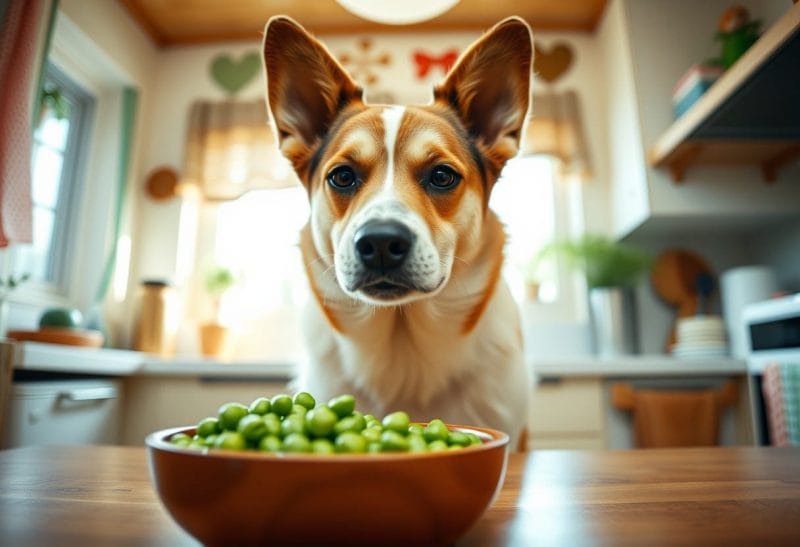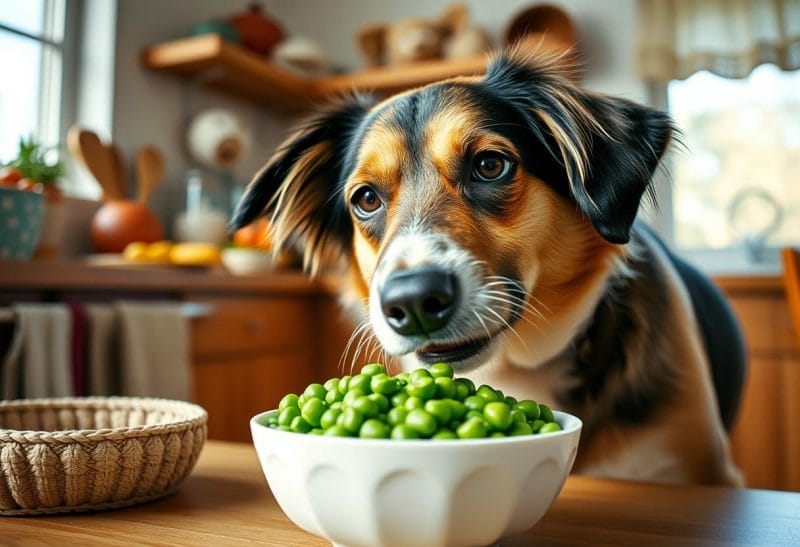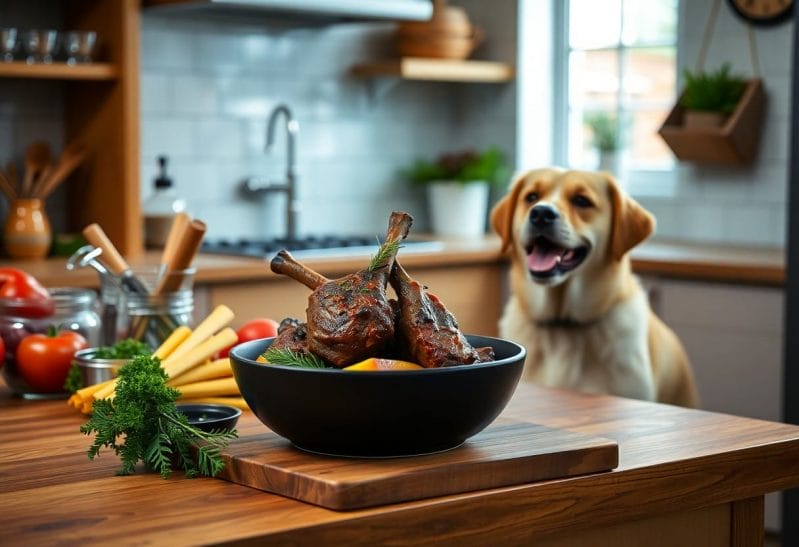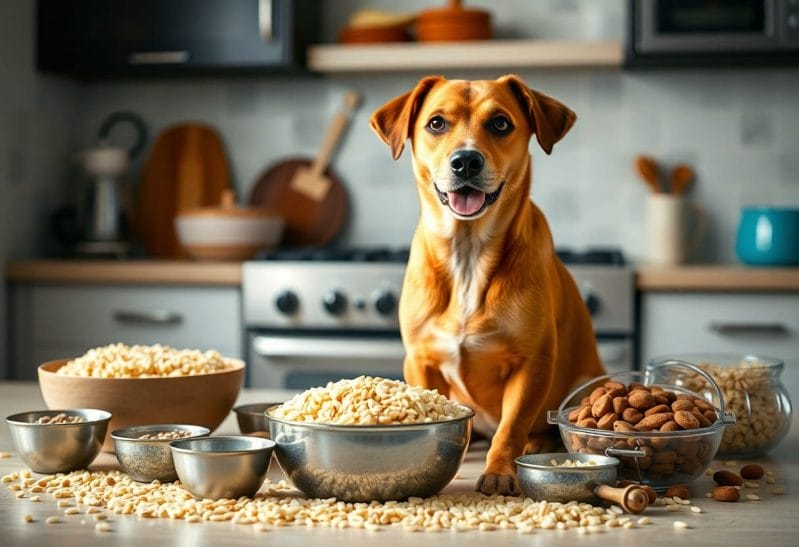Can dogs eat peas?
Vegetables can be a healthy addition to your dog’s diet, but you might wonder if certain types, such as peas, are safe for your furry friend. In this post, you’ll discover whether peas are a nutritious option for your dog, the potential health benefits they offer, and any precautions you should take. Understanding what’s safe for your pet is crucial for their well-being, so let’s probe the facts about feeding peas to your dog.
Key Takeaways:
- Nutritional Benefits: Peas are rich in vitamins and minerals, providing dogs with imperative nutrients such as protein, fiber, and vitamins A, B, and K.
- Moderation is Key: While peas are generally safe for dogs, they should be given in moderation to avoid digestive upset.
- Avoid Additives: Always serve peas plain; avoid those cooked with seasonings, butter, or other additives that can be harmful to dogs.
Nutritional Benefits of Peas
For dog owners, understanding the nutritional benefits of peas can make a significant difference in your pet’s diet. Peas are not only safe for dogs to eat, but they also provide numerous health advantages. By incorporating peas into your dog’s meals, you can enhance their overall well-being. If you want to explore the benefits and potential risks, you can check out this article on Can Dogs Eat Peas? Benefits & Risks.
Vitamins and Minerals
On top of being delicious, peas are packed with necessary vitamins and minerals that aid your dog’s health. They are rich in vitamins A, B, C, and K, which can support immune function, improve vision, and contribute to healthy skin. Minerals such as iron, potassium, and magnesium found in peas help with muscle function, maintaining healthy blood pressure, and promoting good bone health.
Fiber Content
Fiber plays a crucial role in your dog’s digestive health, so adding peas to their diet could be beneficial. Peas are a fantastic source of fiber, which can help regulate your dog’s bowel movements and promote a healthy digestive system. This can be particularly helpful for dogs prone to constipation or diarrhea.
Benefits of fiber in your dog’s diet include not only regular bowel movements but also a feeling of fullness that can prevent overeating. Incorporating high-fiber foods like peas can assist in weight management, especially in dogs that may be overweight or prone to weight gain. Your dog will not only enjoy the taste but will also benefit from the added fiber content.
Low-Calorie Snack
Fiber also makes peas an excellent low-calorie snack option for dogs. When you want to treat your furry friend without the guilt, consider substituting high-calorie treats with peas. They can be a perfect reward during training or simply a tasty addition to their meals.
The low-calorie nature of peas allows you to indulge your dog’s cravings without compromising their healthy diet. Offering peas as a treat can satisfy their hunger while providing nutritional value, ensuring your dog stays healthy and happy.

Are Peas Safe for Dogs?
While peas can be a healthy addition to your dog’s diet, it’s important to consider safety factors before introducing them. Many dogs can tolerate peas well, but like any food, they might not be suitable for every individual. Monitoring your dog for any adverse reactions is crucial.
Potential Allergies
Dogs are known to develop food allergies, and peas can be one of those culprits. While rare, some dogs may experience skin irritations, gastrointestinal upset, or other allergy symptoms after consuming peas. Therefore, if you’re introducing peas to your dog’s diet for the first time, watch for any signs of discomfort or allergic reactions.
Digestive Concerns
Digestive health is paramount when considering new foods for your furry friend. Some dogs may experience gas or bloating after consuming peas due to their high fiber content. While fiber is beneficial in moderation, too much can lead to digestive discomfort.
The key to avoiding digestive issues is to introduce peas gradually into your dog’s diet. Start with small amounts to see how your dog reacts. If your dog shows any signs of discomfort, such as gas or diarrhea, it’s best to reduce the serving size or ultimately avoid peas altogether.
Recommended Serving Sizes
An appropriate serving size of peas for your dog depends on their size and overall health. It’s generally advisable to limit peas as a side dish rather than a main meal to maintain a balanced diet.
Another guideline to follow is to treat peas as an occasional snack rather than a dietary staple. For small dogs, a couple of peas may suffice, while larger dogs might enjoy a handful. Always consider moderation and ensure your dog is getting a well-rounded diet that meets all their nutritional needs.

How to Serve Peas to Dogs
Unlike many human foods, peas can be a healthy and nutritious treat for your dog when served correctly. However, how you prepare and present these little green gems can make a significant difference in your dog’s enjoyment and health benefits.
Fresh vs. Frozen Peas
Serve your dog fresh or frozen peas, as both options offer important vitamins and minerals. Fresh peas from the pod not only provide a delightful crunch but also retain all their natural nutrients. On the other hand, frozen peas are convenient and can be quickly thawed, making them a practical choice for busy pet owners.
Cooked Peas
Peas can be easily incorporated into your dog’s diet when cooked properly. You should steam or boil them without salt or seasoning to maintain their nutritional value and ensure they are easily digestible. Avoid serving canned peas, as they often contain added preservatives and sodium that aren’t beneficial for your furry friend.
The key to cooking peas for your dog is to ensure they are soft enough for your pet to chew and digest comfortably. After cooking, allow them to cool before serving, as hot food can be uncomfortable and even harmful for your dog. A handful of cooked peas mixed into your dog’s meal can make a healthy and flavorful addition.
Pea-Based Dog Food
Food options that feature peas as a primary ingredient are increasingly popular. Many commercial dog foods utilize pea protein as a source of plant-based protein, which can be especially beneficial for dogs with specific dietary restrictions.
Fresh peas are often included in various dog food formulations, providing important amino acids, vitamins, and minerals. When opting for a pea-based dog food, always look for high-quality ingredients and check for complete and balanced nutritional profiles to ensure your dog receives all necessary nutrients.
To wrap up
Following this, you can confidently include peas in your dog’s diet, as they are a nutritious and tasty treat when served properly. Rich in necessary vitamins and minerals, peas can support your dog’s overall health. However, always ensure that they are cooked and served in moderation to avoid gastrointestinal issues. Remember to consult your veterinarian before introducing any new food to your pet’s diet to accommodate any specific dietary needs or restrictions your dog may have.
Q: Can dogs eat fresh peas?
A: Yes, dogs can eat fresh peas! Green peas, including sugar snap peas and snow peas, are safe for dogs and can provide a nutritious snack. They are low in calories and high in vitamins A, B, and K, as well as being a good source of fiber. When feeding fresh peas to your dog, make sure to wash them thoroughly and serve them in moderation. Always supervise your dog while they are eating to prevent any choking hazard.
Q: Are frozen peas safe for dogs?
A: Absolutely, frozen peas are safe for dogs to consume. In fact, they can be a great option as they’ll often retain their nutritional value even when frozen. Just be mindful to serve them in moderation and ensure they are thawed before offering them to your pet to avoid any potential choking hazard. Additionally, avoid any peas that have been seasoned with salt or spices that may be harmful to dogs.
Q: Are canned peas good for dogs?
A: Canned peas can be given to dogs, but it’s important to ensure they don’t contain added salt, sugar, or preservatives. Always opt for low-sodium or no-salt-added varieties to keep it healthy for your dog. Rinse the peas under water to remove some of the extra sodium before serving. Like other forms of peas, canned peas should only be offered as an occasional treat and not as a significant part of your dog’s daily diet.











